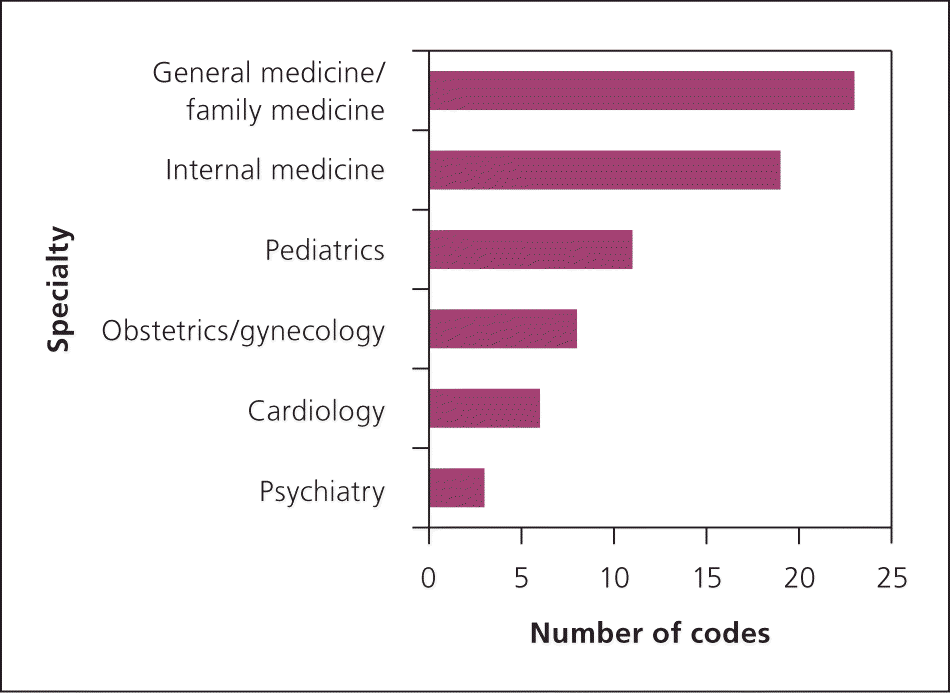
Am Fam Physician. 2014;90(11):790
Author disclosure: No relevant financial affiliations.
Family physicians provide care for a wider range of conditions than do most specialists, introducing a high level of complexity into their practice. Historic assumptions associating complexity with the intensity, skill, and training required to accommodate a single task fail to capture the complexity of identifying and managing many interacting conditions. Payers and policy makers should recognize this dimension of complexity in care and revisit payment criteria.
We used data from the 2010 National Ambulatory Medical Care Survey to count how many diagnostic codes were used by primary care physicians and other specialists (see accompanying figure).1 Primary care physicians provide care for a larger number of diagnoses than do specialists. This is exemplified by family physicians, for whom it takes at least 23 diagnostic codes to account for 50% of their coding. In contrast, six diagnostic codes account for 50% of coding for cardiologists, and only three for psychiatrists.1 These findings are consistent with a recent study that calculated the complexity of family physician visits to be 1.3 times that of cardiologists and five times that of psychiatrists.2

It has been suggested that the difficulty of professional work may be more associated with how many different tasks are being managed and how they interact with each other (the complexity of the work) than how difficult any single task is to complete.3 Even a complicated task, such as managing a single chronic condition, becomes simpler and more routine when it is constantly repeated. Managing a complex adaptive system, such as treatment of a patient with multiple and interactive conditions who is taking multiple drug regimens that may be in conflict, is more complex.4 The more stages there are in the management of each problem and the more problems there are to manage, the higher the skill level needed to perform the task correctly and ensure that what helps one problem does not harm another.5
The Centers for Medicare and Medicaid Services should account for the complexity of the care offered by primary care physicians and the time required to provide that care by making adjustments to the fee schedule used to pay physicians.
This series is coordinated by Sumi Sexton, MD, Associate Medical Editor.
A collection of Graham Center Policy One-Pager published in AFP is available at https://www.aafp.org/afp/graham.
Policy One-Pagers are available from the Graham Center at https://www.graham-center.org.
